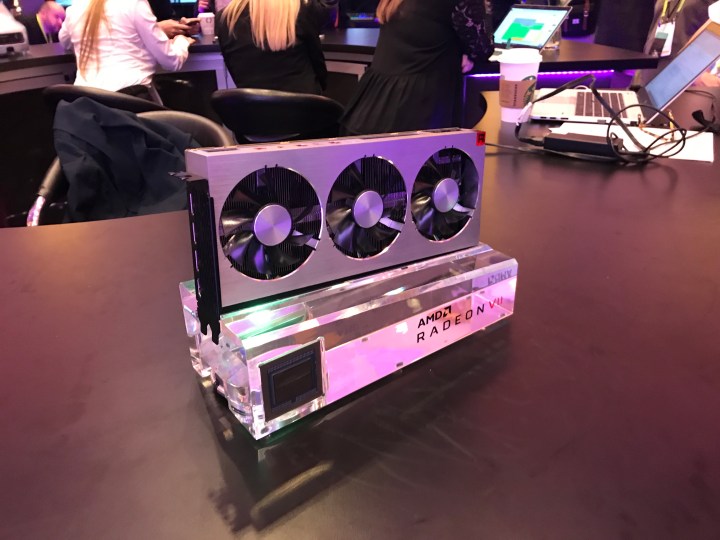
At CES, AMD revealed the Radeon Vega VII, the world’s first 7nm graphics card for consumers, but there could be bigger plans ahead for the rest of the new year. In a new interview, Mark Papermaster, AMD’s chief technology officer, hints that 2019 could be the year when AMD has a full lineup of 7nm Radeon GPUs.
Though AMD’s Radeon Instinct MI60 enterprise GPU was the first 7nm GPU to be released in late 2018, with the Vega VII the second GPU for consumers, both are just the start of the roadmap. According to Mark Papermaster, additional, and perhaps cheaper, AMD GPUs built on the 7nm architecture are coming to consumers.
“What we do over the course of the year is what we do every year. We’ll round out the whole roadmap. We’re really excited to start on the high-end … you’ll see the announcements over the course of the year as we round out our Radeon roadmap,” said Papermaster to The Street.
As announced at CES, the AMD Radeon Vega VII is priced at $700. If what Papermaster says holds true, a less expensive 7nm GPU and desktop processors could further bolster AMD’s position in the chipset market. Still, AMD remains the only chipset maker building on the more efficient and performance-packed 7nm process. AMD rivals Intel and Nvidia are selling products based on an older and less advanced production process.
As proof of the power of 7nm GPUs, the Radeon Vega VII packs a total of 60 compute units and a clock rate of 1.8 GHz and is built on the second-generation AMD Vega architecture. It also sports 16GB of HBM2 memory at a bandwidth of 1TB a second. AMD also promised that the power in Vega VII can lead to a 35-percent increase in performance in Battlefield 5 over last generation’s Radeon RX Vega 64. It also can perform just as well as the Nvidia Geforce RTX 2080 in some games.
There’s still no support for ray tracing on the new 7nm GPU, however, which has been a source of controversy in the past. AMD CEO Dr. Lisa Su previously said it is in “deep development” to support ray tracing, a headline feature on Nvidia’s graphics cards. For now, benchmarks will have to be produced to tell us the truth about the true power of AMD’s first 7nm consumer GPU, but if it can build more chips on the technology and expand to a full lineup, 2019 could be the year for AMD.
Editors' Recommendations
- AMD predicts 700-watt GPUs before 2025, but it has a plan
- Nvidia’s GPUs could smash AMD in the next-gen performance war
- Test suggests AMD Ryzen 7 5700X could be a midrange gem
- The new AMD Radeon Pro GPUs look perfect for a powerful Mac Pro update
- AMD could launch its next-gen graphics cards and CPUs next year



